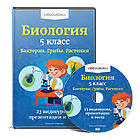| Topic | Lymphatic System |
| Class | 8 grade |
| Teaching aims |
|
| Content objectives | By the end of the lesson students will be able to:
|
| Language objectives | Lexis: Lymph, Lymphatic system, Lymphatic capillaries, Pathogen, fighting cells, Tissue fluid, Edema, absorption, valve, backflow, Lymph nodes, Palatine tonsil, Thymus, spleen, Thoracic duct, Cervical Lymph nodes, Axillary Lymph nodes, Inguinal Lymph nodes, Fluid, Toxins, Waste, Homeostasis Functional language: comparing, explaining , discussing, analyzing, sorting the cards, describing |
| Assessment |
|
| Cognition | working with definitions and doing research about the topic of “Lymphatic System” |
| Culture | understanding that topic of lymphatic system is essential for human health |
| Communication
|
|
| Content | working with text about “Lymphatic System” and present understanding of the topic |
| Materials | Books, A4 papers, colorful pencils, envelop, “Traffic Light”. |
| Stage / Aim | Time 40 m | Procedure |
| Lead in | 2 min | T: Hello everyone. Please, I want you to sit down. I want you to open the copybooks and write down the date. Today’s lesson is going to focus on “Lymphatic System”. After today’s lesson you will be able to describe the lymphatic system and the relationship between the blood and tissue fluid and lymph. We will start with Explanation and we will finish with Activity. |
| Warm up ( to set the context and activate prior knowledge) | 5 min | T: Before we start I want you to open the books on page 44 and think about why is edema formed in our body. Ss: Students brainstorming why is edema formed in our body. T: Well done. Now, Let’s work with new terminology. There is one “Traffic Light” on each table. I want you to look at new words and place the words that you know on “Green” light, the words that you might know on “Orange” light and the words that you don’t know on “Red” light. Ss: Students place words on corresponding places and discuss it in groups and with teacher (Attachment 0). T: Brilliant! Let’s practice these words together. I want you to repeat these words after me! T: Now, I’m going to give you papers with some missing words, try to mingle and solve the task. |
| Presentation ( to present the Lymphatic system) | 10 min | Now, moving on to Explanation let’s open the text on pages 44 and 45 and listen to me? ICQ: Do we have to read the text on page 44 or 64? (44)? Do you have to read the text or listen to me? (Listen to you) Лимфатическая система тесно связана с системой кровообращения. Основные функции лимфатической системы:
Лимфатическая система играет важную роль в регуляции гомеостаза жидкости в организме. Если лимфатическая система будет нарушена, то тканевые жидкости будут накапливаться в межтканевых пространствах, что в свою очередь приведет к образованию отеков. Лимфатические капилляры - это микроскопические трубочки с закрытым концом, которые объединяются и образуют более крупные лимфатические сосуды. Лимфатические сосуды похожи на вены. Крупные лимфатические сосуды приводят к специализированным органам - лимфатическим узлам. Затем более крупные сосуды соединяются с венами системы кровообращения в грудной клетке. В лимфатической системе также находятся лейкоциты. Лимфатические узлы работают как фильтры для удаления патогенов. Лимфатические узлы расположены вдоль лимфатического пути. В них содержится большое количество лимфоцитов, которые борются с чужеродными микроорганизмами. Как правило, лимфатические узлы маленькие и круглые, и они не заметны человеку. Но когда они активизируются, они становятся крупнее (например, миндалины, расположенные на шее). Это означает, что иммунная система активно работает. После переваривания пищи, большинство питательных веществ всасываются в тонком кишечнике и попадают в кровеносные сосуды. Переваренные жиры же, в свою очередь, попадают в лимфатическую систему. |
| Practice ( to consolidate the material, to check understanding of the topic) | 8 min | T: Now let’s move on to practical activity. I want you to work in 2 groups and solve the task. (Teacher gives students the envelope with task in it Attachment 1). Ss: Students do creative activity. T: Now, I want you to look at the picture on page 44 and stick the names of the lymphatic system on your posters. When you finished I want you to look at definitions and match them with words on your projects (Attachment 2). ICQ: Do you have to write or stick the names? (Stick). Do you have to imagine definitions or match them? (Match) T: Brilliant! Let’s practice these words together. I want you to repeat these words after me! |
| Production (to speak and present the lymphatic system) | 10 min | T: Well done. Good job! Now I want you to present your posters and speak about Lymphatic System. Make sure that you covered questions on page 45 in “Literacy” box. ICQ: Do you have to speak about Blood System? (No, we have to speak about Lymphatic System)? Do you have to answer the questions on page 45 in “Literacy” box? (Yes) Ss: Students present their projects and speak about their topic. |
| Reflection (to reflect on what they have studied) | 3 | T: Good job! Thank you. Now, I want you to take stickers and post your tweets about today’s lesson (Attachment 3). |
| Conclusion (to finish the lesson and set the homework) | 2 | Now, I’d like to recap. Today we have explored the topic of “Lymphatic System”. The key things to takeaway is that it has 3-basic functions: transportation, protection and absorption. For the next lesson I want you to read the paragraph on pages 44 and 45 again and do the “Research time” box. Remember this homeworks is not optional, you must be ready for the next lesson. Have a nice day! I will see you on Friday. |
Attachment 0
| English | Kazakh | Russian |
| Lymph | лимфа | лимфа |
| Lymphatic system | Лимфа жүйесі | Лимфатическая система |
| Lymphatic capillaries | Лимфа қылтамырлары | Лимфатические капилляры |
| Pathogen –fighting cells | Патогендік күресетін жасушалар | антипатогенные клетки |
| Tissue fluid | Ұлпа сұйықтығы | Тканевая жидкость |
| Edema | ісіну | Отек |
| absorption | сіңіру | Всасывание, абсорбция |
| valve | қақпақша | клапан |
| backflow | Кері ағын | Обратное течение |
| Lymph nodes | Лимфа түйіндері | лимфоузлы |
| Palatine tonsil | Көмегей безі | Небная миндалина |
| Thymus | тимус | тимус |
| spleen | көкбауыр | селезенка |
| Thoracic duct | Кеуде қуысы | Грудной проток |
| Cervical Lymph nodes | Мойын лимфа түйіндері | Шейные лимфатические узлы |
| Axillary Lymph nodes | Қолтық асты лимфа түйіндері | Подмышечные лимфатические узлы |
| Inguinal Lymph nodes | ингвиналды лимфа түйіндері | Ингвинальный (паховый) лимфатические узлы |
| Fluid | сұйықтық | Жидкость |
| Toxins | токсиндер | токсины |
| Waste | қалдықтар | отходы |
| Homeostasis | гомеостаз | гомеостаз |
| English | Kazakh | Russian |
| Lymph |
| лимфа |
|
| Лимфа жүйесі |
|
| Lymphatic capillaries | Лимфа қылтамырлары |
|
|
|
| антипатогенные клетки |
| Tissue fluid |
|
|
| Edema |
| Отек |
|
|
| Всасывание, абсорбция |
| valve | қақпақша |
|
| backflow | Кері ағын |
|
| Lymph nodes | Лимфа түйіндері |
|
|
| Көмегей безі | Небная миндалина |
| Thymus |
| тимус |
| spleen | көкбауыр |
|
|
| Кеуде қуысы | Грудной проток |
| Cervical Lymph nodes |
| Шейные лимфатические узлы |
|
| Қолтық асты лимфа түйіндері |
|
| Inguinal Lymph nodes |
| Ингвинальный (паховый) лимфатические узлы |
| Fluid | сұйықтық |
|
| Toxins |
| токсины |
|
| қалдықтар | отходы |
| Homeostasis | гомеостаз |
|
| English | Kazakh | Russian |
|
| лимфа |
|
| Lymphatic system |
| Лимфатическая система |
|
|
| Лимфатические капилляры |
| Pathogen –fighting cells | Патогендік күресетін жасушалар |
|
|
| Ұлпа сұйықтығы | Тканевая жидкость |
|
| ісіну |
|
| absorption | сіңіру |
|
|
|
| клапан |
|
|
| Обратное течение |
|
|
| лимфоузлы |
| Palatine tonsil |
|
|
|
| тимус |
|
|
|
| селезенка |
| Thoracic duct |
|
|
|
| Мойын лимфа түйіндері |
|
| Axillary Lymph nodes |
| Подмышечные лимфатические узлы |
|
| ингвиналды лимфа түйіндері |
|
|
|
| Жидкость |
|
| токсиндер |
|
|
| қалдықтар | отходы |
|
|
| гомеостаз |
Attachment 1
| Create a life-sized drawing of the lymphatic system. Start by getting a large piece of bulletin board paper or butcher paper in any light color. Lie down on the paper and have a partner trace your body’s outline in pencil. Use a dark-colored marker, crayon or paint to draw in and label the lymph nodes and lymphatic vessels located all over the body. Note how lymph nodes vary in size. |
| Create a life-sized drawing of the lymphatic system. Start by getting a large piece of bulletin board paper or butcher paper in any light color. Lie down on the paper and have a partner trace your body’s outline in pencil. Use a dark-colored marker, crayon or paint to draw in and label the lymph nodes and lymphatic vessels located all over the body. Note how lymph nodes vary in size. |
| Create a life-sized drawing of the lymphatic system. Start by getting a large piece of bulletin board paper or butcher paper in any light color. Lie down on the paper and have a partner trace your body’s outline in pencil. Use a dark-colored marker, crayon or paint to draw in and label the lymph nodes and lymphatic vessels located all over the body. Note how lymph nodes vary in size. |
| Create a life-sized drawing of the lymphatic system. Start by getting a large piece of bulletin board paper or butcher paper in any light color. Lie down on the paper and have a partner trace your body’s outline in pencil. Use a dark-colored marker, crayon or paint to draw in and label the lymph nodes and lymphatic vessels located all over the body. Note how lymph nodes vary in size. |
Attachment 2
| Cervical lymph nodes | are lymph nodes found in the neck. |
| Palatine tonsil | the two tonsils that can be seen on the left and right sides at the back of the throat. |
| Thymus | a lymphoid organ situated in the neck of vertebrates that produces T cells for the immune system. |
| Axillary lymph nodes | a lymph node in the armpit region that drains lymph from the breast and nearby areas. |
| Right lymphatic duct | drains lymph from the right upper limb, right side of thorax and right halves |
| Spleen | is an organ found in virtually all vertebrates. Similar in structure to a large lymph node, it acts primarily as a blood filter. |
| Cisterna chyli | a dilated lymph channel usually opposite the first and second lumbar vertebrae and marking the beginning of the thoracic duct |
| Thoracic duct | is the largest lymphatic vessel in the human body. |
| Inguinal lymph nodes | they are located in the femoral triangle, and are grouped into superficial lymph nodes, and deep lymph nodes. |
Attachment 3

My biggest success today has been…
A question I still have is…
Today I have learnt...
Today I have tried to…
Scaffolding for Presentation
| Tips for giving Presentation Think about the aims of your presentation. Do you want to inform or entertain your audience? Think about your audience. Do they already know anything about the topic? Why are they listening to your presentation? Choose the most suitable content for them. Make eye contact with the audience and try to sound confident when you give your presentation. Make some notes and use these to remember what comes next, but don't just read things aloud. Speak in a loud, clear voice. Make sure you don't speak too quickly and rush your presentation. Useful language Starting a presentation
Introducing a topic
Handing over to another speaker
Ending the presentation
|

 Получите свидетельство
Получите свидетельство Вход
Вход












 Урок по теме "Лимфатическая система" на английском языке (68.34 KB)
Урок по теме "Лимфатическая система" на английском языке (68.34 KB)
 0
0 507
507 41
41 Нравится
0
Нравится
0


